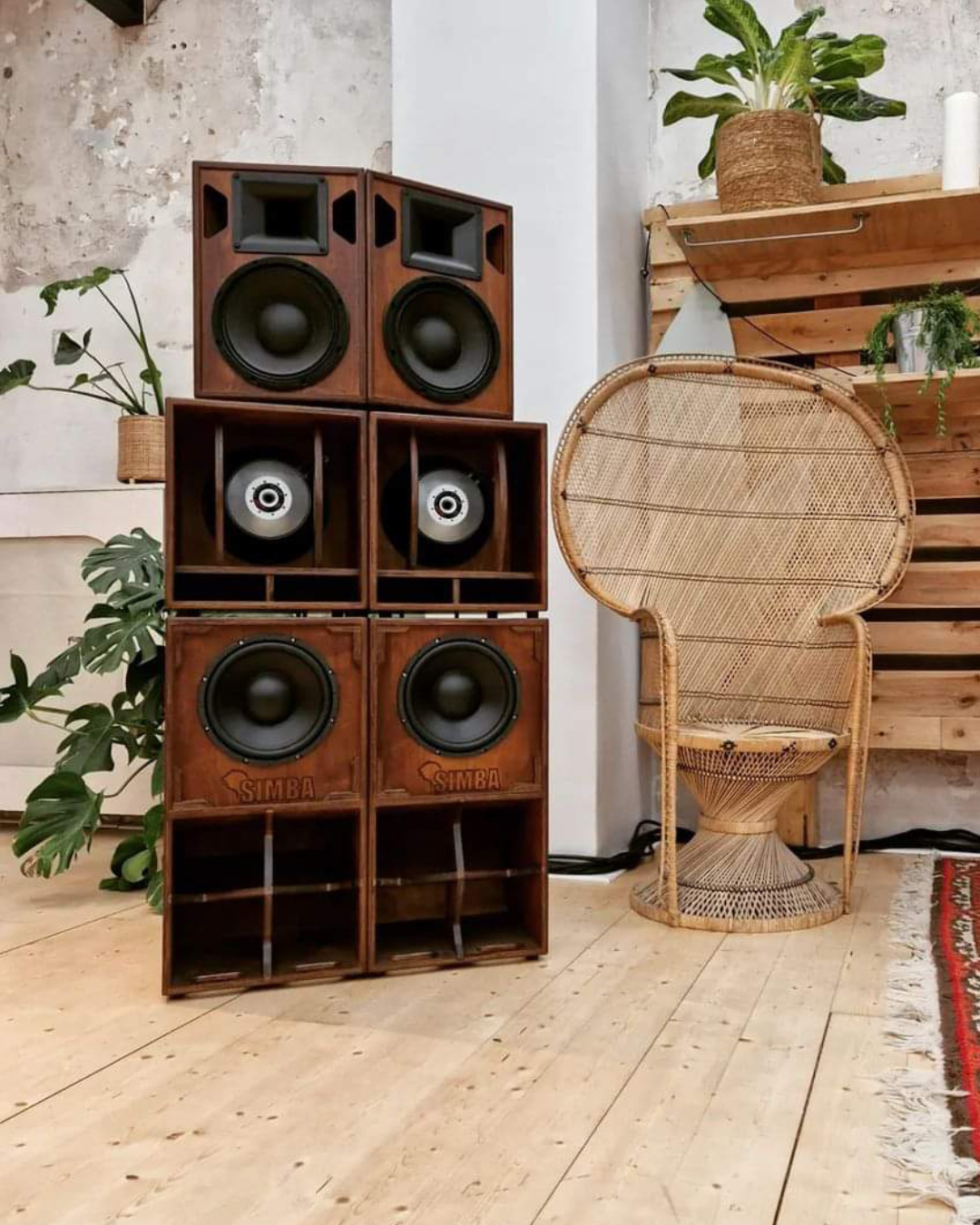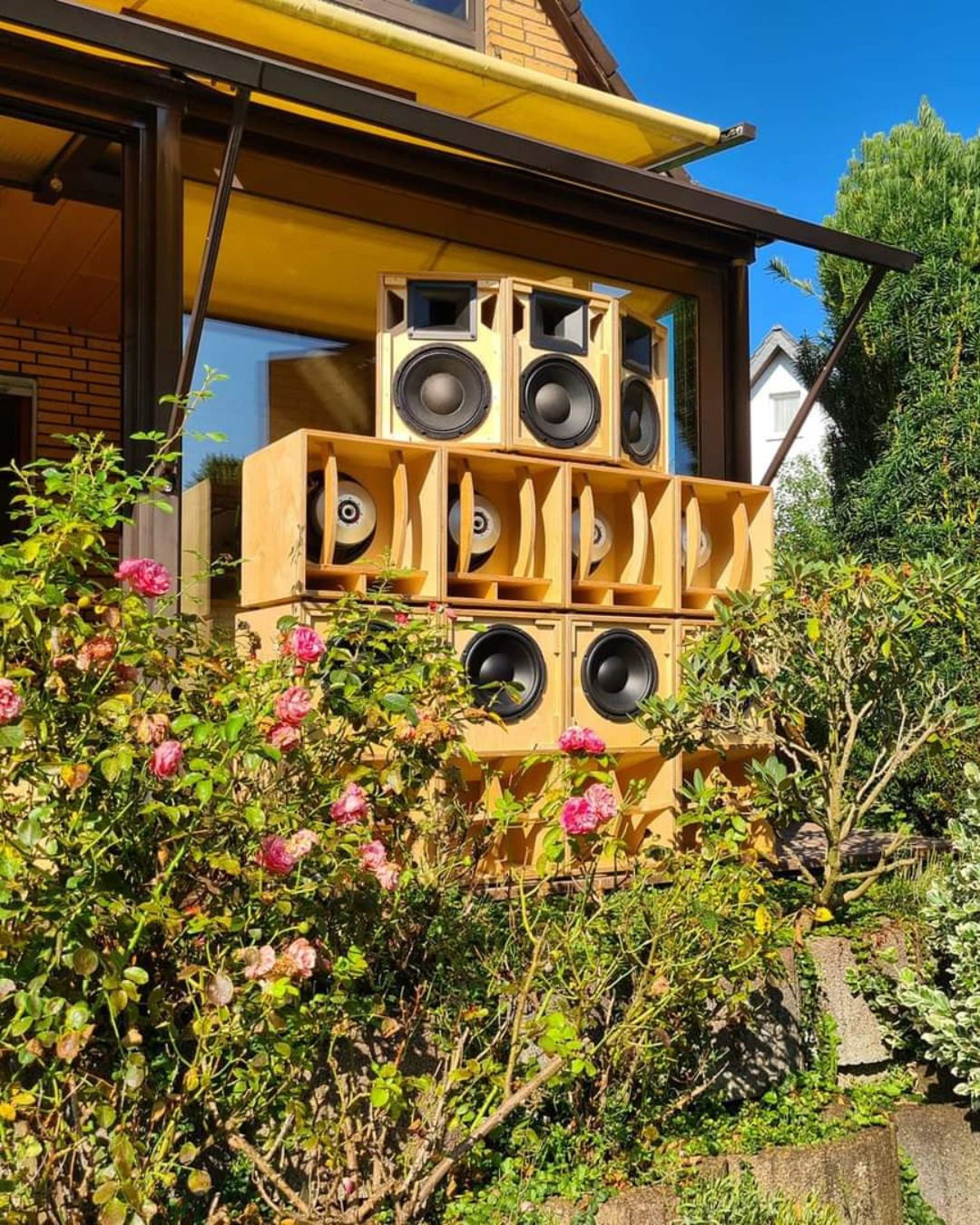Kennen Sie das schon? Sobald Sie die Tanzfläche betreten haben, dachten Sie: „Wow, das ist aber ein gutes Soundsystem !“ Der Bass war echt beeindruckend – aber genau richtig, ohne den Rest zu übertönen. Der Kick war kraftvoll, aber man konnte trotzdem den Gesang und alle Details der Musik hören. Man konnte zu seinem Lieblingslied mitsingen (wir alle lieben es ja, so dezent), und alles war perfekt ausbalanciert. Und Sie wussten, genau, dieses Event wird Ihnen unvergesslich bleiben!
Deshalb ist ein 4-Wege-Soundsystem oft die erste Wahl für Profis, Tontechniker und Musikliebhaber, wenn es um das perfekte Klangerlebnis geht. Doch was genau macht ein 4-Wege-System so besonders und wie arbeiten seine Komponenten zusammen, um einen vollen, ausgewogenen Klang zu erzeugen? In diesem Leitfaden analysieren wir die wesentlichen Elemente eines 4-Wege-Soundsystems – Bass, Mitten und Höhen – und erklären, welche entscheidende Rolle jedes dieser Elemente bei der Audiowiedergabe spielt.
Was ist ein 4-Wege-Soundsystem?
Ein 4-Wege-Soundsystem besteht aus vier Hauptkomponenten, die jeweils für einen bestimmten Frequenzbereich zuständig sind. Diese Komponenten arbeiten harmonisch zusammen und sorgen für ein abgerundetes und intensives Klangerlebnis, das sicherstellt, dass kein Detail in der Musik verloren geht. Die vier Elemente umfassen Subwoofer, Bass, Mitten und Höhen.

Lassen Sie uns tiefer in jede Komponente eintauchen und verstehen, warum sie wichtig sind.
Subwoofer: Die Grundlage für tiefe Bässe
Der Bass (Subwoofer) ist für die Wiedergabe tiefer Frequenzen im Bereich von 20 Hz bis 100 Hz zuständig. Diese tiefen Bässe verleihen der Musik Fülle und körperliche Wirkung und lassen Sie die Vibrationen in Ihrer Brust spüren. In Genres wie Reggae, Dub und elektronischer Musik ist ein leistungsstarker Subwoofer unerlässlich für ein umfassendes Klangerlebnis, an das sich Ihr Publikum entweder noch heute erinnert oder das Sie lieber vergessen möchten. Der perfekte Bass ist spürbar, ohne die Ohren zu belasten.

WARUM IST DAS WICHTIG?
- Verbessert die Tiefe Ihres Soundsystems.
- Unverzichtbar für basslastige Musikstile.
- Es kann entscheidend sein, ob sich Ihr Publikum an das Erlebnis erinnert.
Kick: Mehr Punch für die tiefen Töne
Während der Subwoofer tiefe Bässe liefert, deckt der Oberbass- oder Kick-Treiber Frequenzen im Bereich von 80 Hz bis 300 Hz ab. Dadurch bleiben Bassdrums, Synth-Basslines und perkussive Elemente straff, druckvoll und klar definiert, anstatt matschig oder dröhnend zu klingen. Stellen Sie sich den Kick als Brücke zwischen tiefen Bässen und Mitten vor – er sorgt für Druck, ohne zu übertreiben.

WARUM IST DAS WICHTIG?
- Verhindert, dass der Bass überwältigend oder undefiniert klingt.
- Sorgt für mehr Klarheit bei Kick-Drums und niederfrequenten Schlaggeräuschen.
- Hilft, Bassinstrumente von Subwoofer-Frequenzen zu trennen.
Mittelklasse: Wo die Details wohnen
Der Mitteltöner deckt den Frequenzbereich von 300 Hz bis 4 kHz ab, in dem die meisten menschlichen Stimmen und Instrumentaldetails zu finden sind. Diese Komponente sorgt dafür, dass Gesang, Gitarren, Klaviere und Blechblasinstrumente natürlich und lebendig klingen. Und seien wir ehrlich: Wir alle lieben es, diese in unseren Songs zu hören!

WARUM IST DAS WICHTIG?
- Entscheidend für die Klarheit und Verständlichkeit der Stimme.
- Fängt die Wärme und Fülle der Instrumente ein.
- Überbrückt die Lücke zwischen Bass und Höhen und erzeugt einen ausgewogenen Klang.
Hochtöner: Das Funkeln im Klang
Schließlich gibt der Hochtöner den Hochtonbereich (4 kHz bis 20 kHz) wieder. Hier kommen Details wie Becken, Hi-Hats und hochfrequente Synthesizer besonders gut zur Geltung. Ein hochwertiger Hochtöner sorgt dafür, dass diese Klänge klar und klar bleiben, ohne schrill oder harsch zu wirken. Kein Ohrenbluten auf unserer Uhr!
WARUM IST DAS WICHTIG?
- Verleiht hohen Frequenzen Klarheit und Definition.
- Sorgt für einen luftigen, offenen Klang für ein natürlicheres Hörerlebnis.
- Verhindert Härte oder Verzerrung bei hohen Tönen.
Wie ein 4-Wege-System alles zusammenbringt
Ein gut konzipiertes 4-Wege-Soundsystem stellt sicher, dass jeder Frequenzbereich von einem speziellen Treiber verarbeitet wird. Dies verhindert Verzerrungen und sorgt für optimale Klarheit. Der Schlüssel zur optimalen Leistung Ihres Systems ist die richtige Frequenzweiche . Sie stellt sicher, dass jede Komponente nur die Frequenzen wiedergibt, für die sie am besten geeignet ist.
Genau das hatten wir im Sinn, als wir sowohl das Simba 4-Wege-Soundsystem als auch das Faya 4-Wege-Soundsystem entworfen haben. Wir wollten eine Lösung schaffen, die nicht nur professionellen Klang bietet, sondern auch kompakt und transportfreundlich ist. Mobilität sollte nicht zu Lasten der Klangtreue gehen. Deshalb haben wir diese Systeme so konzipiert, dass sie satte Bässe, kraftvolle Oberbässe und klare Mitten und Höhen bieten und gleichzeitig leicht zu transportieren und aufzubauen sind. Unser Ziel war einfach: Jeder sollte Musik so genießen können, wie sie klingen soll – ob zu Hause oder auf einer Veranstaltung .


Warum sollten Sie sich für 4-Wege-Systeme von Simba oder Faya entscheiden?
Die Wahl eines Simba- oder Faya -4-Wege-Systems gegenüber 2- oder 3-Wege-Alternativen bietet mehrere Vorteile. Eine bessere Frequenztrennung gewährleistet eine präzise Wiedergabe jedes Frequenzbands und reduziert so Verzerrungen und Phasenprobleme. Dank der verbesserten Klangklarheit tritt jeder Frequenzbereich klarer hervor, ohne um Raum zu konkurrieren, wodurch die Musik detailreicher wird. Schließlich sorgt die natürlichere Klangwiedergabe dafür, dass Instrumente und Gesang in jeder Umgebung klarer, naturgetreuer und ausgewogener klingen.
Diese sorgfältige Balance der Komponenten macht die 4-Wege-Soundsysteme Simba und Faya zu einem Wendepunkt für alle, die bei ihrer Audio-Einrichtung sowohl hohe Leistung als auch Komfort verlangen.
Brauchen Sie Hilfe bei der Auswahl des richtigen 4-Wege-Sounds? Kontaktieren Sie uns , wir helfen Ihnen gerne weiter!



Hinterlasse einen Kommentar
Diese Website ist durch hCaptcha geschützt und es gelten die allgemeinen Geschäftsbedingungen und Datenschutzbestimmungen von hCaptcha.